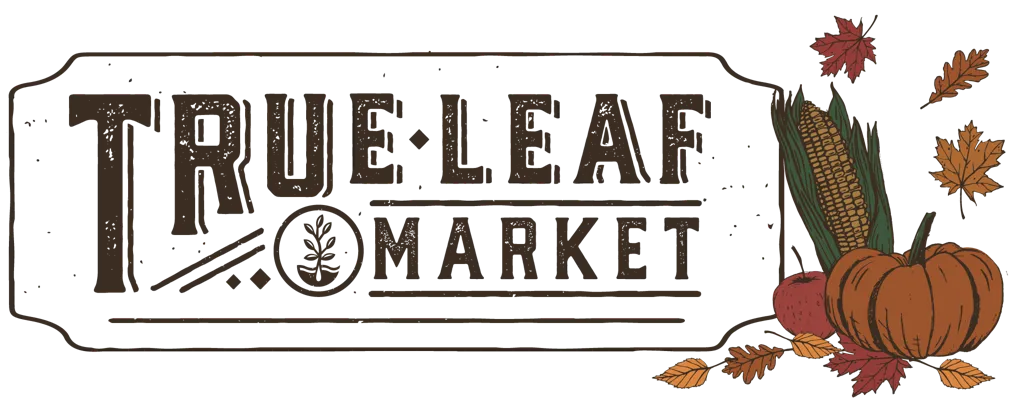Download Free Vegetable Growing Guide PDF
Growing Chile De Arbol Peppers in the Vegetable Garden
Chile de Arbol peppers require a warm growing environment, making them suitable for growth in USDA zones 3-12 if started indoors. Begin by sowing the seeds indoors about eight weeks before the last frost date. The seeds should be planted in a light, seed-starting mix, barely covered with soil—about 1/4 inch deep. They need a consistent temperature of 80-85 F to germinate effectively, which can take 2-3 weeks. It's important to keep the soil evenly moist but not waterlogged.
Once the seedlings emerge thin, they only have one seedling per cell or 1-inch square if using a tray. Avoid pulling any seedlings out, but instead, cut them off at the soil level so as not to disturb the roots of the desired seedling. When the seedlings grow a few sets of true leaves, they should be gradually acclimated to outdoor conditions in a process known as hardening off. This involves exposing the plants to outside conditions incrementally over a week, starting with a few hours a day and gradually increasing the exposure time to reduce transplant shock.
Transplant the hardened-off Chile de Arbol seedlings into the garden or larger containers when the outdoor temperature consistently stays above 60 F at night. Choose a sunny spot with well-draining soil. Space the plants about 2-3 feet apart to give each plant enough room to mature.
Chile de Arbol peppers thrive with regular watering, especially during dry spells, as consistent moisture is crucial to prevent the fruits from drying on the vine. However, be careful not to overwater, as this can lead to root rot and other fungal diseases. A mulch layer of organic material can help maintain soil moisture and temperature, as well as suppress weeds.
Fertilization is another critical aspect of growing Chile de Arbol peppers. Begin with a balanced, slow-release fertilizer at planting time. As the plants start to flower and set fruit, switch to a fertilizer higher in phosphorus and potassium to support fruit development. Applying a liquid fertilizer every 4-6 weeks during the growing season is typically sufficient. Be cautious with nitrogen-heavy fertilizers, which can promote more foliage growth at the expense of fruit production.
Harvesting Chile De Arbol Peppers
Harvest time for Chile de Arbol peppers typically comes 90-100 days after planting. The peppers initially appear green and will gradually turn bright red as they mature. You can harvest the peppers when they are green if you prefer a milder flavor. However, for full heat and more complex flavors, wait until they are fully red. To harvest, use garden shears or a sharp knife to cut the peppers from the plant, being careful not to damage the stems and branches.
About Cherry Mini Hot Hybrid Pepper Garden Seeds
This pepper, whose name translates to "tree chili" in Spanish, derives its name from the woody stem to which its fruits cling.
A staple in Mexican cuisine, the Chile de Arbol pepper boasts a heat level that ranges from 15,000 to 30,000 Scoville Heat Units, categorizing it as quite hot. This heat influences its culinary uses and impacts the harvesting process, as capsaicin (the compound responsible for heat) intensifies as the peppers mature.
Chile de Arbol peppers are versatile in the kitchen. They can be used fresh, dried, or powdered to add heat to sauces, salsas, and marinades.
Toast a handful of dried peppers, then rehydrate them in hot water. Blend with roasted tomatoes, garlic, a bit of onion, and season with salt for a vibrant, spicy salsa perfect for tacos or a chip dip.
Tips From Our Gardeners
"One of the main reasons for growing Chile De Arbol is so you can make your very own Chile De Arbol salsa! There are many recipes for it online, but it is loved for its nutty and earthy flavor, which is unique to this chile variety!"
 |
- Lara Wadsworth, True Leaf Market Writer
|
Other Resources
Chile De Arbol Pepper Seeds Per Package:
- 250 mg - Packet- Approximately 30 Seeds
- 1 oz - Bulk Seeds - Approximately 3,360 Seeds
- 4 oz - Bulk Seeds - Approximately 13,440 Seeds
Non-GMO Chile De Arbol Pepper seeds are available for Fast Free Shipping on qualifying orders.
=======
ATTRIBUTES
Basic Info
| Latin Name: |
Capsicum annuum
|
| Pepper Type: |
Hot - These peppers all have some heat and usually rank at least 100, but usually 500 or more on the Scoville scale and have heat ranging from mild to extremely hot. |
| Chile De Arbol Pepper Color: |
Red |
| Chile De Arbol Pepper Flavor: |
Spicy, hint of smokiness |
Growing Info
| Hardiness Zone: |
4, 5, 6, 7, 8, 9, 10, 11 Technically a tender perennial, but commonly grown as an annual. Perennial in zones 10 and 11. |
| Days to Maturity: |
92 days (from transplant) |
| Days to Germination: |
7-10 |
| Seeding Depth: |
0.25 inch |
| Plant Spacing: |
12-24 inches |
| Row Spacing: |
24-36 inches |
| Plant Height: |
24-36 inches |
| Growth Habit: |
Upright |
| Soil Preference: |
Well-draining, loose (sandy loam), slightly acidic (6.5 pH), and moisture retaining. Too much nitrogen in the soil may lead to more foliage production and less fruiting, similar to tomatoes. Peppers also need sufficient amounts of phosphorus and calcium. We recommend using a balanced fertilizer for the best results. |
| Temperature Preference: |
Warmer (70-85 F). During high heat, foliar and flower development slow or pause until temperatures return to the preferred range. |
| Light Preference: |
Full Sun |
Other
| Direct Sow: |
No |
| Start Indoors: |
Yes. Start Indoors 6-8 weeks before your last spring frost date. Harden off and transplant when seedlings are 6-8 inches tall. Bury the stem slightly deeper than the root ball. Avoid planting hot and sweet peppers right next to each other, as they can cross-pollinate, potentially affecting the flavors of your harvested peppers. |
| Pepper Pollination: |
Peppers have perfect flowers (male and female parts) and will self-pollinate. However, wind and pollinator activity may increase success rates of fertilization and fruit production. |
| Plant Width: |
12-18 inches |
| Deer Resistant: |
Yes |
| Scoville Heat Units: |
15,000 to 30,000 |
| Heat Level: |
Medium - 2,500 to 30,000 on the Scoville Scale. Example: Jalapeno |
| Growth Speed: |
Late - Ready for harvest around 91 days or more from transplant. |
| Germination Temperature: |
80-90 F |
| Pests and Diseases: |
Peppers are commonly susceptible to cutworms, aphids, flea beetles, bacterial spot, Phytophthora, sunscald, and blossom end rot. To avoid or reduce problems with pests and diseases, stick to a regular watering schedule (drip irrigation is preferred), plant into well-draining soils, and utilize practices such as crop rotation. When taking pest control measures, consider utilizing integrated pest management principles by using mechanical removal, biological control, and other cultural practices before turning to chemical agents. |
| Garden Size: |
Greenhouse, Garden Plot, Raised Bed, Container |
| Pepper Use: |
Salsas, rubs |
| Climate Tolerance: |
Heat, Drought |



















